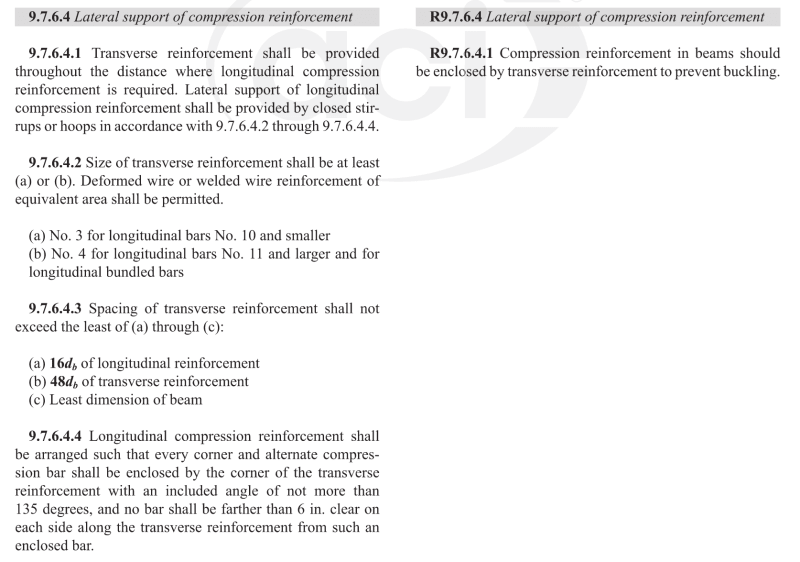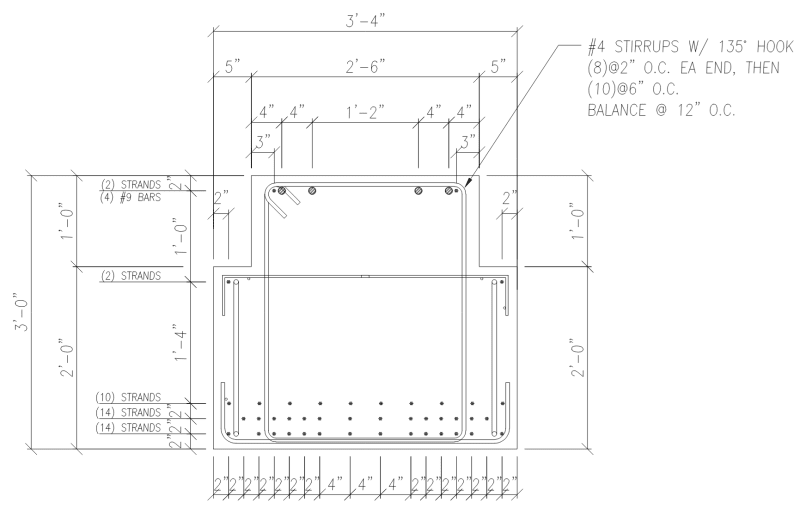JustUseSteel
Structural

9.7.6.4.1 states that the requirements apply "where longitudinal compression reinforcement is required". What exactly does that mean? If a beam works without the top bars considered in the analysis, then.. confinement is not required? Even if those bars, in reality, are stressed substantially? What if I need two but use six (can expand on reasons if important); if the analysis works with just the corner bars, can I ignore confining the center bars?
Next, the way I interpret 9.7.6.4.4. is that every compression bar needs to be either:
A: wrapped by a hooked transverse bar
B: 6" max on either side between two bars wrapped by hooked transverse bar
However, I am told from superiors that this situation below meets the code as one side is within 6" of a confined bar.

Another potential concern with this design is the lack of cover between the top strands and top mild bars. I think this is a non-issue as in my mind the worst it would do is delay bar development, but they have development beyond way beyond the code mininmums.
